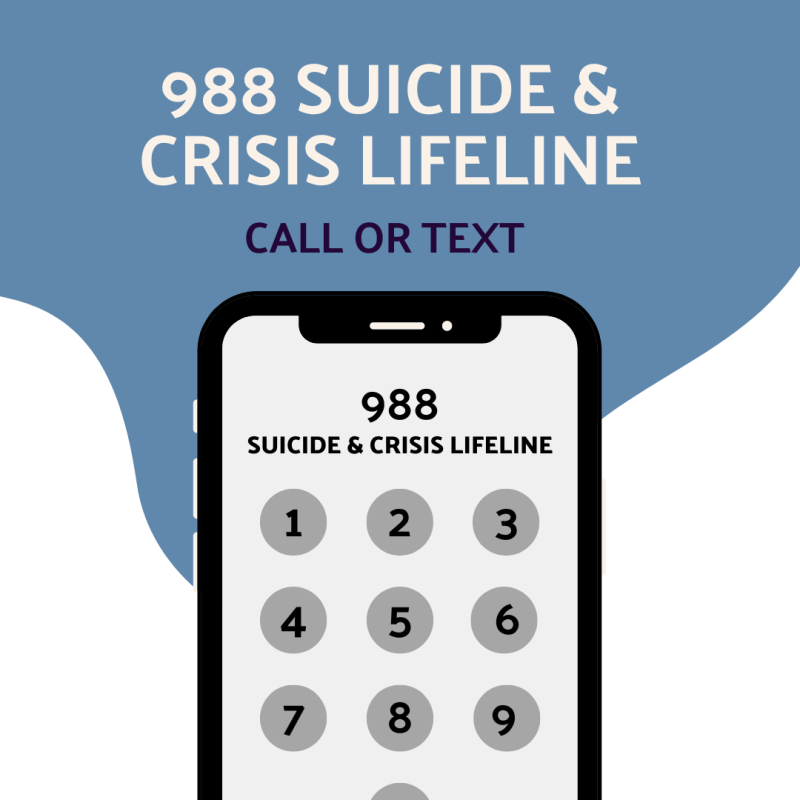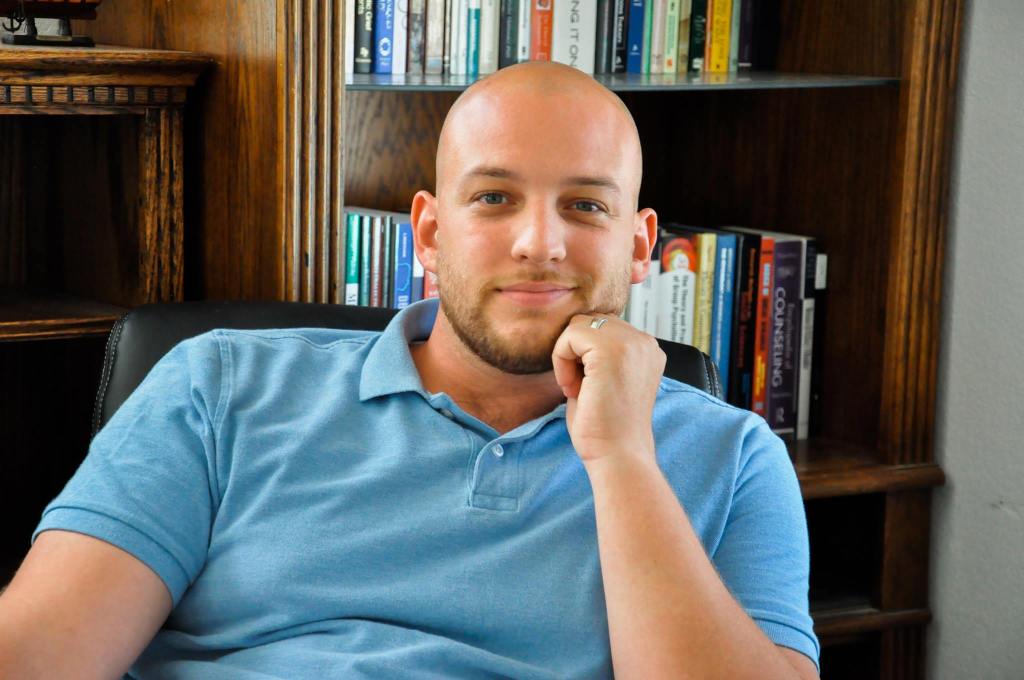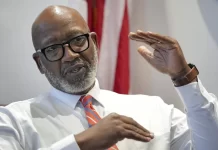By Breanna Reeves | Black Voice News
On July 16, California debuted the new suicide and crisis hotline number: 988. The short, three-digit federal number is now active across the nation and is an alternative to calling 911 for people experiencing mental health crises.
Recently, 988 has drawn criticism across social media because of the possibility dialing the number could elicit a police response. According to a spokesperson from the 988 Suicide & Crisis Lifeline number, fewer than 2% of Lifeline calls involve emergency services.

The short, three-digit federal number 988 is now active across the nation and is an alternative to calling 911 for people experiencing mental health crises. (Image: Breanna Reeves).
Involvement of emergency services
“When emergency services are involved, over half of these emergency dispatches occur with the caller’s consent. We recognize that, for some individuals, having contact with emergency services can be traumatic and dangerous, and whenever possible we recommend alternate options such as collaborating on a safety plan, utilizing mobile crisis teams, collaborating with the individual’s loved ones or professionals,” Lifeline stated in an email.
Le Ondra Clark-Harvey, Executive Director of the California Council of Community Behavioral Health Agencies, explained that call centers have 98% effectiveness in “ameliorating the concerns that so many Californians have.”
“For that other 2 to 3%, they are then transferred to the next level of help. So whether that be outpatient treatment, hospitalization, maybe most mobile crises, if a county has a mobile crisis unit, etc,” Clark-Harvey said.
When 911 is called in the event of someone having a mental health crisis many local police departments have implemented their own crisis teams that are deployed. In Riverside for example, a Community Behavioral Health Assessment Team (CBAT) that consists of two specialty trained police officers and two Riverside County clinical therapists are tasked with responding to calls involving mental health emergencies.
According to Officer Ryan J. Railsback, Public Information Officer for the Riverside Police Department, about 50% of the calls for service that are answered by the department are for mental health emergencies. With trained dispatchers who are trained to recognize the calls, the CBAT addresses the crisis in the field.
“The clinical therapist does a lot of the work. We have the officer there to provide that safe environment for the therapist and for the person that we’re responding to, as well to make sure that they’re feeling safe enough that they can talk with someone,” explained Railsback.
Clark-Harvey emphasized that the importance of 988 is to directly connect people in crisis with crisis counselors who are equipped to support callers in need. She described the new number as a “huge advent in technology.”
Before 988, people were able to call the National Suicide Prevention Lifeline (1-800-273-8255) which Clark-Harvey stated that as a clinician and a psychologist, even she has a tough time remembering the number. The previous number will continue to function indefinitely, according to Lifeline.
“And the great thing is that 988 has been advertised and promoted widely. So, our hope is that there’s going to be less stigma about reaching out when you have a need, or when you’re in crisis,” Clark-Harvey explained. People experiencing a crisis or who need support can call or send a text to 988 and get connected with an operator.
More work to be done
While the 988 number has been applauded by advocates, some remain cautious about future implementation and capacity. Assembly Bill 988, currently going through the CA Legislature, seeks to allocate $8 million from the General Fund to the 988 State Mental Health and Crisis Services Special Fund to support implementation costs.

Omar Gonzalez-Valentino, MS, LMFT, LPCC, is the director of Behavioral Health at TruEvolution, an Inland Empire-based nonprofit organization that advocates for health equity and racial justice on behalf of Black, Latinx and LGBTQ+ people. (source: facebook.com).
Omar Gonzalez-Valentino, MS, LMFT, LPCC, is the director of Behavioral Health at TruEvolution, an Inland Empire-based nonprofit organization that advocates for health equity and racial justice on behalf of Black, Latinx and LGBTQ+ people.
“I’m really, really optimistic about this number, but cautiously, because a lot of what the bill actually states is that these numbers have to be made available by July 16. Great, July 16, has come and gone,” Gonzalez-Valentino explained. “But a lot of the infrastructure that supports this number is not set, or at least not mandated to be in place until [later].”
According to AB 988, “The bill would require, no later than July 1, 2024, the office to ensure interoperability between and across crisis and emergency response systems used throughout the state, as described. The bill would require the office to consult with specified entities on any technology requirements for 988 centers.”
Gonzalez-Valentino is worried that some counties will be more proactive than others or will have more funding to roll out a comprehensive implementation plan for 988 crisis centers than underfunded counties who may be slower to implement such changes.
“So in terms of infrastructure, I just worry that folks aren’t going to get necessarily the same response based on their geographic location, which has been an issue for a lot of folks in poor or rural counties already,” Gonzalez-Valentino said. “They traditionally don’t have access to the best levels of care or the most immediate levels of care.”
Other local nonprofit organizations like Operation SafeHouse, which supports youth in crisis, are supportive of the new 988 number, but a clinician at the organization plans to test the hotline to get a better sense of the response time.

There is concern that some people will not necessarily receive the same response based on their geographic location. This has already been an issue for some in poor or rural counties. (source: samsha.gov).
Norma Biegel, Western Riverside Region Manager at Operation SafeHouse, explained that the organization operates a text message application for youth in crisis, but the application is only operational from 7 a.m. to 11 p.m. seven days a week. For the eight hours a clinician at the organization is unable to respond to a text message, youth in crisis will benefit from the 988 text feature.
“I think it can only benefit everyone as long as they truly have enough people to man the lines, text, however it’s working,” Biegel said. “I think it’s a great feature. I think it’s definitely needed, especially during COVID.”
Limited capacity for text support
When someone sends a text message to 988, a group of Lifeline crisis centers respond. Texting is currently only available in English. According to the Substance Abuse and Mental Health Services Administration, this service is expected to expand over the next few years to “local and state level response.”
In 2020, during the first year of the pandemic, the U.S. Centers for Disease Control and Prevention (CDC) reported that 45,979 people died by suicide in the U.S. — one death every 11 minutes. Among this population, non-Hispanic American Indian and Alaska Natives had the highest rate, 23.9 per 100,000 people.
“Mental health challenges do not consider any other factors. People are having a hard time, regardless of their gender, their age or their race, their sexuality, folks are struggling right now,” Gonzalez-Valentino stated. “We are not even really out of this pandemic. We like to think we are, but we’re still reminded of it every day. So, make sure that you don’t try to just go it alone. If you’re having a tough time, please make sure that you reach out and utilize the tools that are in place.”
The post What You Need to Know About California’s New 988 Suicide and Mental Health Crisis Line appeared first on Black Voice News.
















